Windows 10 inherits a useful feature from previous versions of the OS. It is called Filter Keys. It is an Accessibility option that you can use to control the keyboard repeat rate and ignore repeated keys.
Advertisеment
When the Filter Keys is enabled, it allows adjusting the following parameters.
- Slow Keys - The sensitivity of the keyboard can be a problem, especially if you strike keys accidentally. Slow Keys instructs Windows to disregard keys that are not held down for a certain period of time.
- Repeat Keys - Most keyboards allow you to repeat a key just by holding it down. If you cannot lift your fingers off the keyboard quickly enough, this can result in unintentionally repeated characters. Repeat Keys lets you adjust the repeat rate or disable it altogether.
- Bounce Keys - You may "bounce" keys, resulting in double strokes of the same key or other similar errors. Bounce Keys instructs Windows to ignore unintended keystrokes.
There are a number of methods you can use to enable or disable Filter Keys in Windows 10. Let's review them.
To Enable Filter Keys in Windows 10,
- Press down and hold the right Shift key for eight seconds.
- You'll hear three short warning tones, followed by a rising tone.
- The following default Filter Keys settings (or the last settings saved) will be activated:
- RepeatKeys: On, one second
- SlowKeys: On, one second
- BounceKeys: Off
- Confirm the operation and you are done.
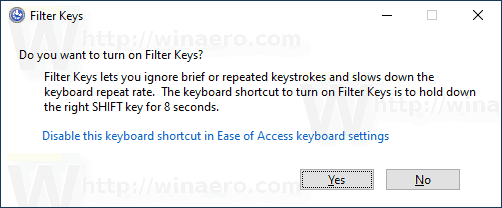
- When the Filter Keys feature is enabled, press and hold the right Shift key for 8 seconds to disable it.
- A low pitch sound will play when it is disabled.
Turn On or Off Filter Keys in Settings
- Open the Settings app.
- Go to Ease of Access -> Keyboard.
- On the right, enable the option Ignore brief or repeated keystrokes and change keyboard repeat rates to turn on Filter Keys.
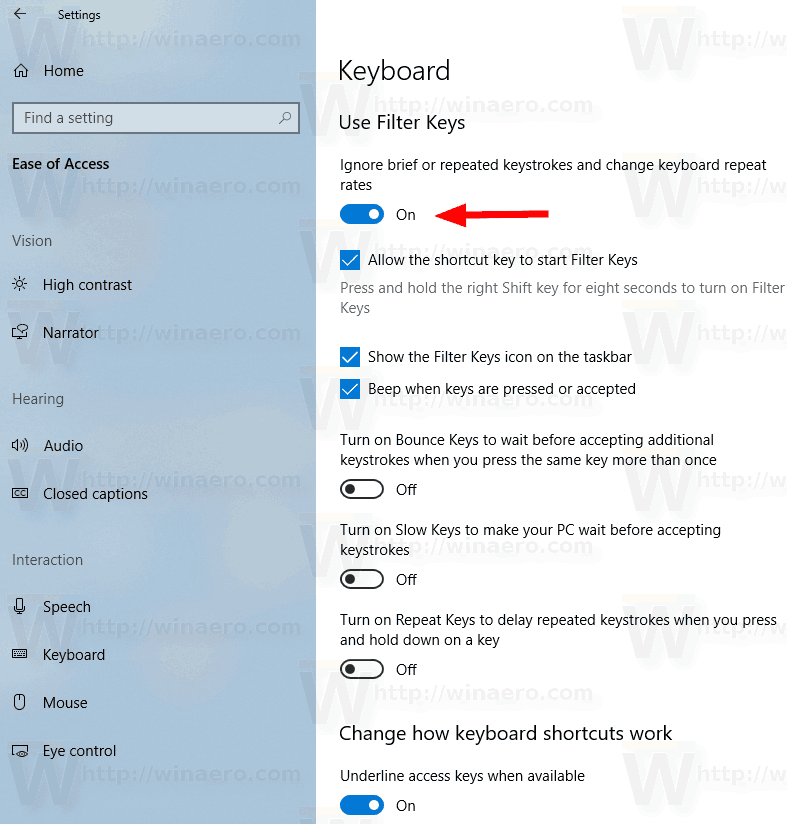
- You can customize the following options:
- Allow the shortcut key to start Filter Keys
- Show the Filter Keys icon on the taskbar
- Beep when keys are pressed or accepted
- Enable Bounce Keys to wait before accepting additional keystrokes when you press the same key more than once, and set how long your PC waits before accepting repeated keystrokes (in seconds).
- Enable Slow Keys to make your PC wait before accepting keystrokes, and change how long your PC waits before accepting a keystroke (in seconds).
- Enable Repeat Keys to delay repeated keystrokes when you press and hold down on a keystroke. Here, you can configure the options Choose how long your PC waits before accepting the first repeated keystroke and Choose how long your PC waits before accepting subsequent repeated keystrokes.
- Finally, to disable Filter Keys, turn off the option Ignore brief or repeated keystrokes and change keyboard repeat rates.
Turn On or Off Filter Keys in Control Panel
- Open the classic Control Panel app.
- Navigate to Control Panel\Ease of Access\Ease of Access Center\Make the keyboard easier to use.
- Turn on Filter Keys under Make it easier to type.
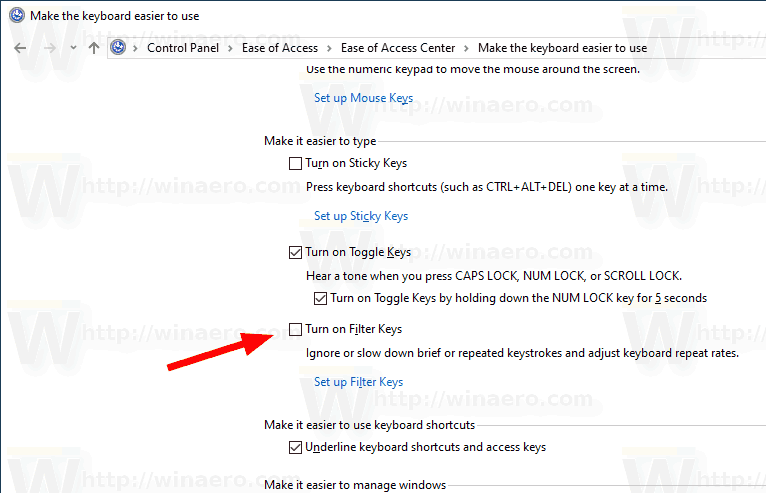
- To customize the options for Filter Keys, click on Set up Filter Keys link under Turn on Filter Keys. This will open the following page.
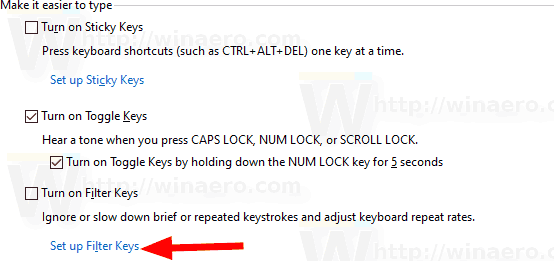
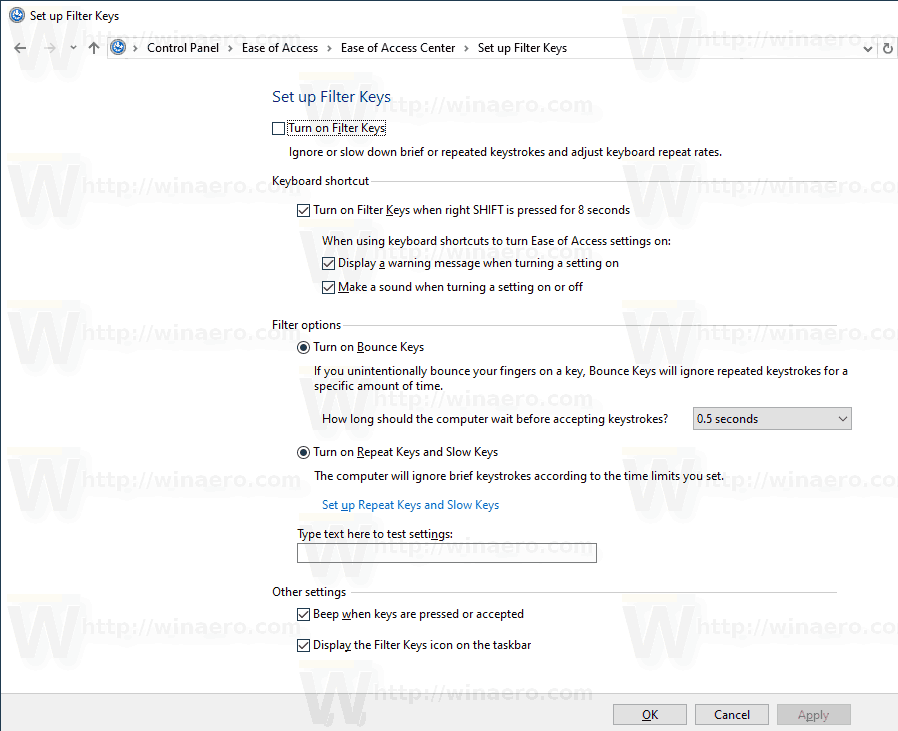
- Change the required options, the click on Apply and OK.
That's it.
Articles of interest:
- Turn On or Off Sticky Keys in Windows 10
- Play a Sound for Caps Lock and Num Lock in Windows 10
- Enable Visual Alerts for Notifications in Windows 10 (Sound Sentry)
- Enable Underline Access Keys for Menus in Windows 10
- Disable High Contrast Keyboard Shortcut in Windows 10
- How to Enable High Contrast Mode in Windows 10
- Change Cursor Thickness in Windows 10
- How To Enable Xmouse Window Tracking in Windows 10
- All Ways to Enable Narrator in Windows 10
Support us
Winaero greatly relies on your support. You can help the site keep bringing you interesting and useful content and software by using these options:
